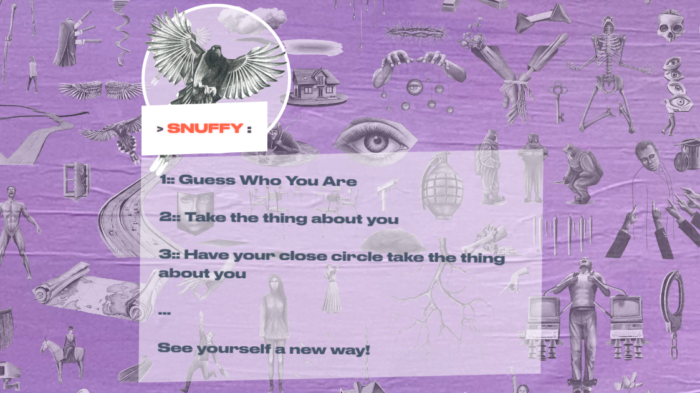Make the psychology of “seeing in” a Web3 project

How do you define “identity” in Web3? It’s a question that opens up a can of metaverse worms. Is your online persona a reflection of your true self? Or is it simply a character you’ve created rather than your real personality? Considering how easily users can hide their IRL existence behind a cartoon PFP, it can be difficult to trust others to be their true selves behind a screen.
However, things get more complicated when we start thinking about digital identity as something separate from real life, “meatspace” identity. Perhaps this is why Soulbound Tokens feels so dystopian in concept. In reality, identity is dynamic and subjective to each individual’s sense of self. But at any given time, an individual is likely to give a different account of their identity, due to their mindset, current situation, and current physical setting.
All in all, identity is a difficult concept to grasp. This is especially true in a realm (such as Web3 and the NFT space) where anonymous and pseudonymous individuals often rule. Do those in the metaverse really understand who they are? A creator tries to figure it out. “Are you who you are? Or are you who you think you are? Or are you who the do you think you are”, it is the interdisciplinary artist Snuffy now they ask in Web3.
Snuffy, identity and mental health
The way we as a society approach and understand mental health has changed drastically in recent decades. While some cite a lack of understanding as one of the reasons previous generations (Gen X and earlier) grew up with a “hide, don’t feel” attitude, in 2022 mental wellness is a hot topic. With the student mental health crisis and the skyrocketing demand for medication fueling the debate around mental health service availability, it’s no surprise that some individuals consider their mental well-being (or mental illness) part of their identity.
Yet for Snuffy, real name Julius Margulies, mental health and identity have always gone hand in hand. For most of his career as a tattoo artist, he has fused identity, mental health (often trauma) and the written word to create a unique catalog of physical and digital art. By asking his clients to write a story about a personal experience, he gathers information and translates written testimonials into unique works of art which he then tattoos on his clients. But now Margulies hopes to take this noisy client experience a step further into Web3 and make it available to everyone.
“In researching my practice of tattooing people and interacting with them, I have found that people see the tattoo as therapy. But in reality, they are writing to me their history is the therapy, Margulies said in an interview with nft now. “Through that process, they identify themselves in what is usually a traumatic experience. So I realized that my unique value to my clients is self-discovery. From there, I thought, ‘Okay, I have this long waiting list for clients, and I only have two hands . How can I give this experience of self-discovery to as many people as possible in one shot?'”
With his new project Looking In, Margulies aims to give the Web3 and NFT communities more insight into themselves. Just as Myers–Briggs types have become a popular tool for people to relate to each other over the past decade or so, Margulies has tapped into the Big Five personality traits, creating a gamified NFT experience to add to the trend with self-discovery.
The point of “seeing in”
While Margulies doesn’t claim to be a psychiatrist or licensed mental health professional, he has let his own experiences with and extensive research on mental illness, plus his aforementioned ongoing role as a sort of tattoo therapist, influence his latest endeavor. Recognizing the malleable nature of identity in Web3, he hopes people can pause and engage in some self-reflection, using his new project as a guide.

With Looking In, users can participate in an informal, sliding scale test intended to provide a basic understanding of where they exist within the framework of the Big Five personality traits: Extraversion, Agreeableness, Openness, Conscientiousness, and Neuroticism. The test will in no way give a diagnosis or a officially analysis of the user’s personality, but exists to offer a tentative sense of self-confidence, accompanied by a collage of art created by Margulies that seeks to blend personality traits together as a visual reflection of a user’s test score.
The test also exists as a fun mode of connection between users and their close friends/community. Because after a user finishes the test and sees the results, they are encouraged to have their close peers take the same test, answer questions as they relate to the user’s personality, to compare the user’s perception of their own personality with that of their . who knows them best. Hence the question: “Are you who you are? Or are you who they think you are?”
“Most people, when I suggested this [question], they realize, ‘I guess I’m a combination of both who I think I am and how I’m perceived by others,'” Margulies said. “So we built this feedback loop for people to really be honest with themselves. To see who they are and how they’re perceived by others. And then you can actually see that the way your close circle perceives you is either the same or different from how you perceive yourself.”
While Looking In is set to launch on December 15 at LookingIn.nyc, and users can sign up now, pricing details have yet to be announced. But Margulies says those interested in participating don’t need to worry about token gating or high coin prices often associated with large NFT projects. As he considers the growing mental health crisis in Web3, he wants this project to be an informal, communal and light-hearted way for everyone to be able to “look within”.
“I would love for this project to be adopted by the masses and I commend it in an accessible way. I want as many people as possible to learn a little more about themselves and find comfort in talking about things like depression and mental illness that might be considered taboo to talk about, Margulies said. “Honestly, I just think for the good of humanity, self-awareness, even for five minutes, can make the world a better place.”
























